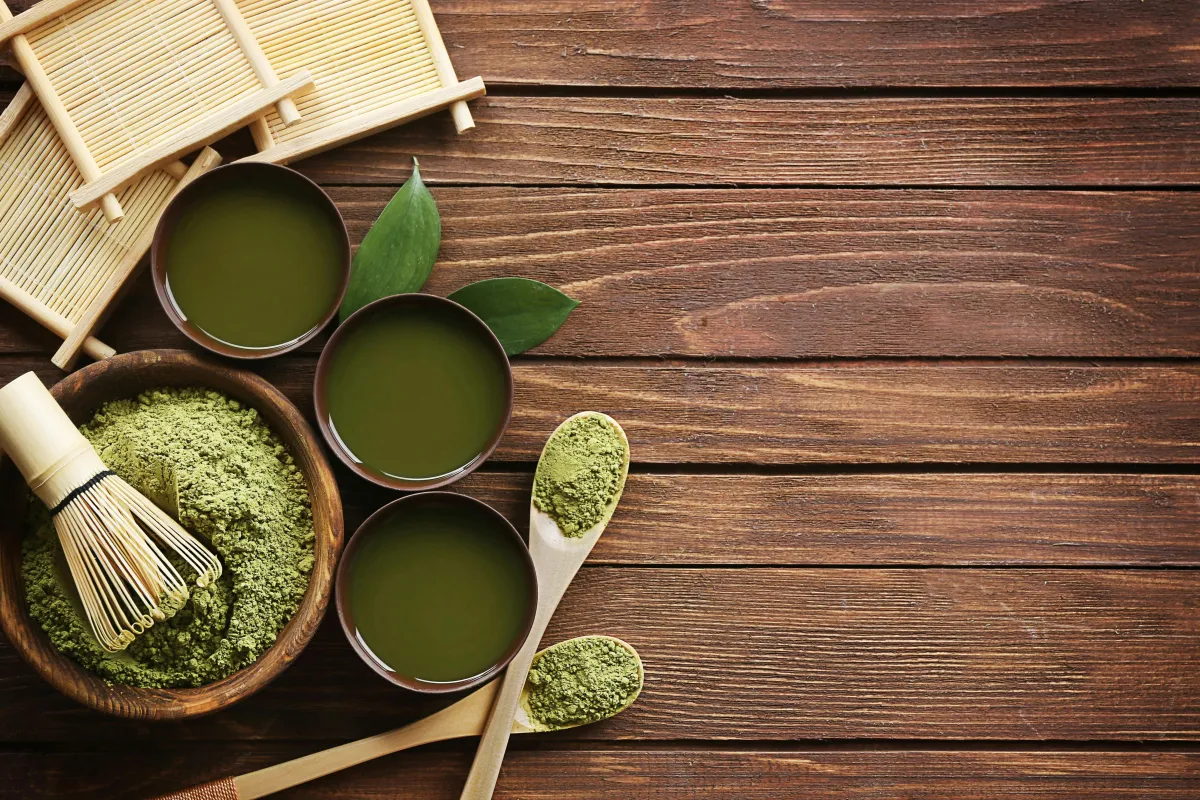
Should You Swap Your Coffee Beans for Matcha Leaves?
What is matcha?
You’ve probably heard of green tea. If you’re not a tea person, maybe you’ve noticed it’s an ingredient with many supplements that claim to boost metabolism and burn more fat.
Simply put, with green tea, you brew the tea leaves and drink the water, whereas matcha is the actual tea leaves ground up into a fine powder. This means more nutritional potency. Matcha leaves growing on green tea bushes are also shaded to intensify their chlorophyll content, making them bright green and chock full of nutrients. Amino acids like Theanine increase as well. The stems and veins are then removed, and the matcha tea leaves are ground into a fine powder in the dark to preserve nutrient content.
Ceremonial grade matcha is vibrant green in color as it’s made from the youngest tea leaves, and its natural sweetness makes it best for drinking by itself, especially for special occasions.
On the other hand, culinary grade matcha is designed to be an ingredient. It is duller in color, and used for baking or in shakes, while also including something sweet to counter its bitterness. Culinary-grade matcha is also often cheaper, so if you’re going to be drinking it daily, you may want to choose this one and sweeten it up.
What are the alleged benefits of matcha?
Green tea has been linked to several health benefits, such as heart disease, type 2 diabetes, and cancer prevention.
L-theanine increases brain chemicals like GABA, serotonin, and dopamine, helping to regulate moods and emotions, promote concentration and alertness for improved focus and creativity, and improve sleep quality, energy levels, and even appetite. Rather than acting as a sedative, it simply lowers the excitability chemicals that produce stress and anxiety, often lowering blood pressure, while increasing those chemicals that promote wakeful relaxation. Think of this as a protective mechanism for brain cell damage related to stress and aging.
Matcha green tea contains caffeine and larger concentrations of EGCG (a catechin that acts as an antioxidant), which is believed to boost metabolism, but studies on its increase of fat oxidation have been inconsistent. When you look at other benefits (i.e. better sleep, appetite regulation) as well as combine antioxidants that reduce stress and inflammation with a stimulant like caffeine, you’ll probably simply be feeling better, moving more, and eating less junk in excess. So, put those together and I’ll let you figure that one out.
So, given the claimed benefits of matcha, those with caffeine sensitivity, those prone to anxiety, and those who struggle relaxing and sleeping may find matcha beneficial, even a proper replacement for other stimulants. L-theanine is typically well tolerated in healthy adults, but some people may wish to speak with their doctor before supplementing with it or consuming something like matcha, such as women pregnant or breastfeeding, children, and those with already low blood pressure.
If this sounds like something that may benefit you, give it a try!
Your trainer and coach,
Kandis
